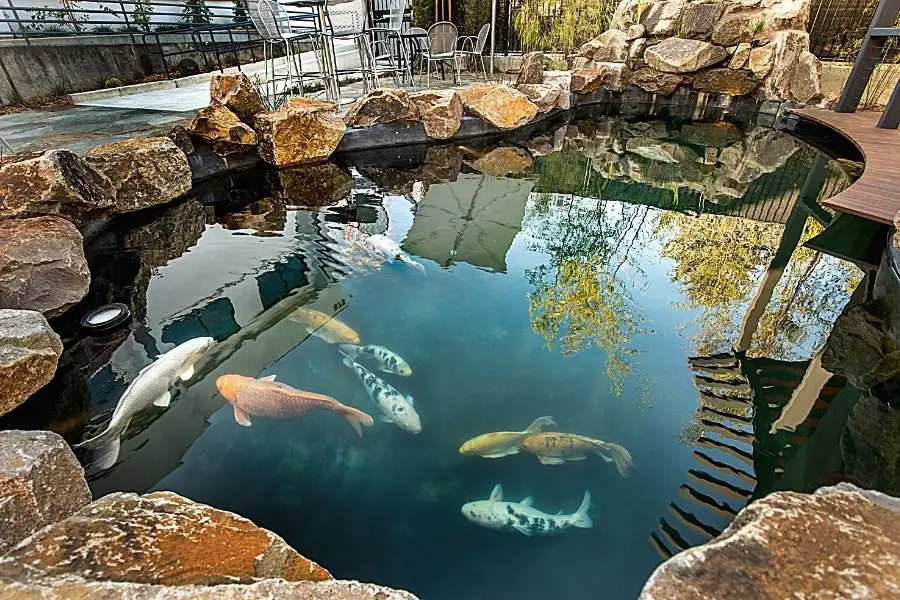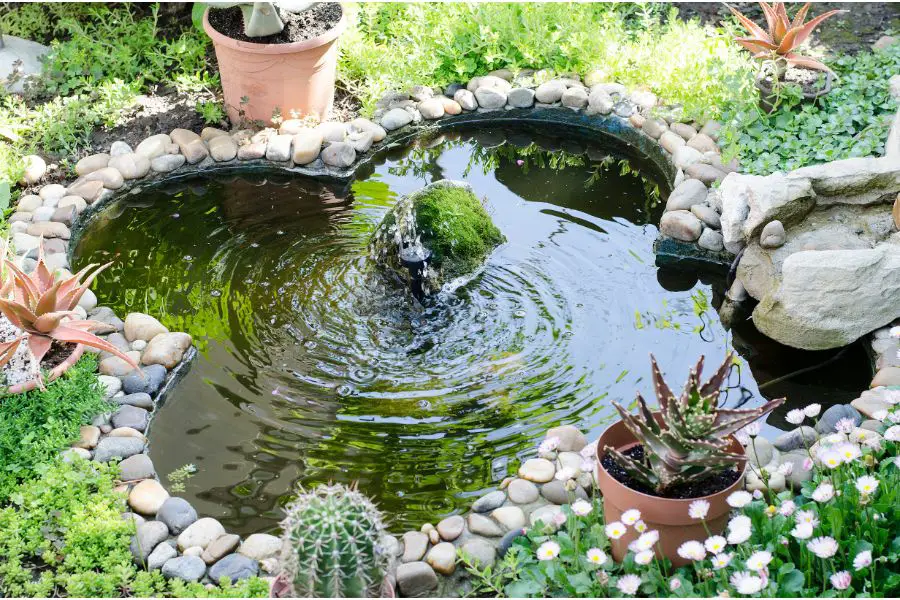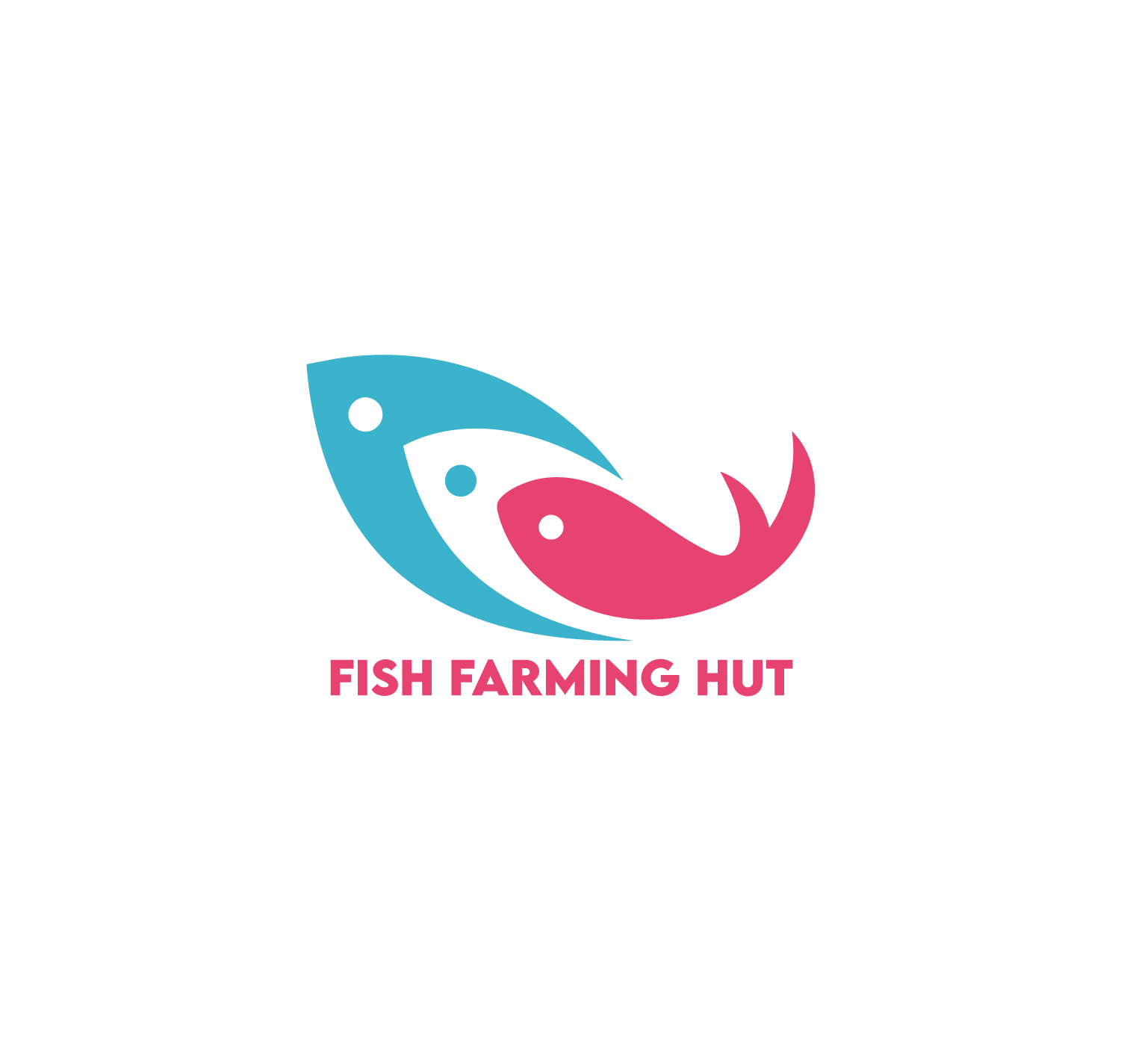Different fish farms use various kinds of ponds for holding, breeding, and fattening up fish. Even within a single fish farm, there may be a few different types of ponds for managing the fish. The types of ponds that a particular fish farm uses are based on the species of fish being farmed, the scale of the operation, and the location of the property.
Earthen ponds are the most natural and common type used for large-scale aquaculture. They are great for raising catfish, tilapia, carp, koi, and goldfish. Above-ground ponds can be constructed of concrete, plastic, rubber, or PVC tarpaulin within a wooden, plastic, or metal frame.
The type of pond makes a massive difference in fishes' health and growth rate. Therefore, if you plan on starting an aquaculture operation, you must carefully consider the type of ponds you use. Here, we discuss the four best and most popular types of ponds for fish farming.

1. Earthen Ponds
These are the most popular types of ponds used for fish farming. Most of the top fish farms in the world use earthen ponds. They allow fish to be kept in an almost natural environment.
Earthen ponds are relatively easy and inexpensive to construct, especially for large-scale aquaculture operations. However, they require land with a consistent water supply from a river or dam.
Earthen ponds can be constructed in several ways, but most often, they are built by digging a hole in the ground, much in the same way as dams are built.
The soil type is an important factor in determining whether an earthen pond is viable. Clay soils are the densest and do not allow water to seep down into the ground. Therefore, earthen ponds must be built in areas with clay soils so that they can hold water.
Where an earthen pond is sited is very important. The area should have a gentle slope so that inflow and outflow can easily be built.
The type of earthen pond that is built depends largely on the property's water supply and the topography of the landscape. Let's look at the different types of earthen ponds:
Dugout Ponds

This type of earthen pond is constructed by excavating an area to form a hole in the ground. The soil from the hole is placed around the sides of the pond to deepen it. Dugout ponds have floors that slope gently inward. The depth usually ranges from 1.5 to 1.8 meters.
Small dugout ponds can be dug manually (with considerable effort), and medium to large-scale ponds are constructed using a bulldozer, TLB, excavator, or a front-end loader. It helps to build these ponds in an area with an existing depression in the landscape.
Barrage Ponds
This type of pond is built within a river course on a valley bottom. A dam is built across the lower end of the valley.
An outlet is built at the bottom of the dam so that the pond can be gravity drained. A structure is built at the pond's inlet so that water flowing in can be controlled. A spillway is built on one side of the dam to allow for overflow during floods.
Embankment Ponds
This type of pond does not need to be dug into the ground. Instead, above-ground dikes are built to hold water. Embankment ponds can be filled by pumping water from a nearby dam or reservoir.
Often, they are built with a drainage hole near the base of the dike so that they can easily be drained. This makes management significantly easier.
Cut and Fill Ponds
Cut and fill ponds are built on a gentle slope. The ground is excavated, and the soil is deposited in a dike on the lower end of the slope to hold the water.
They can be pump-fed or be fed by gravity flow from an inlet canal. A drainage hole is built in the dike so that the pond can be emptied.
Diversion Ponds
This type of pond is built adjacent to a river course and is dug into the ground (where the ground slopes) or built with four dikes on each side (where the ground is flat).
A diversion canal coming from a river feeds the pond, and an inlet structure allows control of the flow of water entering the pond. The water can flow in by gravity or through a pump. In addition, diversion ponds have an outlet canal that allows them to be drained when necessary.
Walled Ponds
Above-ground walled ponds are surrounded by brick, block, concrete, wooden planks, or corrugated metal sheets. The floor of the pond is earthen and can be slightly excavated to increase the depth.
Walled ponds are most often pump-fed and have a drainage hole near the base of the wall so that the pond can be emptied easily.
Lined Ponds
If the soil in an area where a pond needs to be built is not dense and clayey enough, a PVC or rubber pond liner can be used to keep water from seeping out of the pond.
Advantages Of Earthen Ponds
There are many advantages to farming fish in earthen ponds:
Disadvantages Of Earthen Ponds
However, there are a few drawbacks to earthen ponds:
2. Concrete Ponds
Concrete ponds are the second most common type of pond used for farming catfish, tilapia, carp, and ornamental species. They are built above the ground, and the floor of the pond is concrete.
They range in size, but generally, concrete ponds are around 2 x 5 meters. They are perfect for fish that grow quickly and are sold as food.
Concrete ponds can be stagnant without an outlet. Water is pumped in and out when necessary. The water quality in a stagnant pond is lower, so the stocking rate is not very high. A 2 x 5 meter pond can hold 600 fish at most, and they will take longer to grow to table size.
Free-flow concrete ponds have an inflow and outlet, and there is a constant flow of water through the pond. A 2 x 5 meter pond can be stocked with 1000 to 1800 catfish. The fish grow fast because of the freshness of the water and the turbulence caused by the flow, which increases their feeding activity.
Concrete ponds can also have a water recirculation and filtration system. This helps to manage the water quality but does not waste the water that flows out of the pond, like in a free-flow system. These are the costliest to construct and require the most work because the pumps and filters need to be maintained.
Advantages Of Concrete Ponds
There are several advantages to concrete ponds for fish farming:
Disadvantages Of Concrete Ponds
There are a few disadvantages to concrete ponds:
3. Plastic Or Rubber Ponds
Plastic or rubber ponds are rigid, round containers that are used by many beginners in aquaculture. They are straightforward to install and can be filled from a reservoir using a pump. Near the bottom of the pond is an outlet so that the pond can easily be drained by gravity.
Like concrete ponds, water can be recirculated and filtered to maintain good water quality. Therefore, you do not need a river or dam to supply these ponds with water.
Advantages Of Plastic Or Rubber Ponds
These are the pros of farming fish in plastic or rubber ponds:
Disadvantages Of Plastic Or Rubber Ponds
Disadvantaged of plastic or rubber ponds for fish farms:
4. Tarpaulin Ponds
The fourth type of pond used for fish farming is a tarpaulin pond. These are above-ground ponds, like plastic or rubber ponds, but constructed from a flexible PVC tarpaulin material. The outer frame that the tarpaulin is attached to can be made from wood or galvanized metal pipes.
These ponds can be built in a range of different sizes. It is important to buy UV-stabilized, fish-safe PVC tarpaulin so that the material does not degrade in the sun and tear, causing a leak. This is disastrous for the fish inside!
Advantages Of Tarpaulin Ponds
The pros of tarpaulin ponds are:
Disadvantages Of Tarpaulin Ponds
The main drawbacks of this type of pond relate to the nature of the flexible PVC tarpaulin material:
Groundwater-Fed Vs. Rain-Fed Vs. Pump-Fed Fishponds
Fishponds can also be classified based on their source of water:
- Groundwater-fed ponds get their water from springs and aquifers and are generally dug into the ground below the water table. Therefore, water does not have to be pumped in.
- Rain-fed fishponds rely on precipitation to feed them. They are generally large, earthen ponds. This type of pond is only viable in regions that get enough rainfall.
- Pump-fed fishponds can be earthen, concrete, plastic, rubber, or PVC tarpaulin. It requires energy to pump water into these ponds from a larger water source.
What Are Different Types Of Ponds On Fish Farms Used For?
- Nursery ponds – used for growing fry into fingerlings. Above-ground ponds that can be drained work well because fish can easily be sorted.
- Grow out ponds – used for rearing fish to table size. Earthen ponds are excellent for this purpose.
- Spawning ponds – used for breeding fish. Concrete ponds with recirculated water work well for this.
- Holding ponds – used for keeping fish temporarily while they wait to go to market. Plastic, rubber, or tarpaulin ponds are great for this purpose.
- Wintering ponds – deep ponds that keep fish safe from the cold during winter. Deep earthen or concrete ponds work well.
Conclusion
All the different kinds of ponds for aquaculture have their advantages and drawbacks. It would be best to decide which type to use based on the available land, proximity to a water source, your budget, and the scale of the farming operation.
Earthen ponds are the best type in terms of the health and growth rate of the fish. They are also affordable to construct. Concrete ponds are also a great choice, especially in urban areas that are far from a river or dam. Plastic, rubber, and PVC tarpaulin ponds work very well for smaller-scale operations, and they make it easy to manage the water quality and monitor fish's health.
